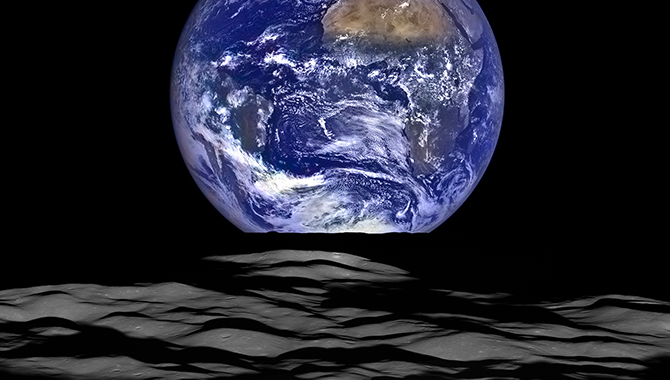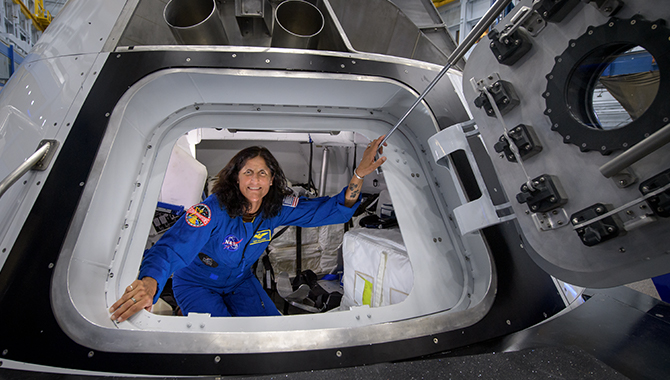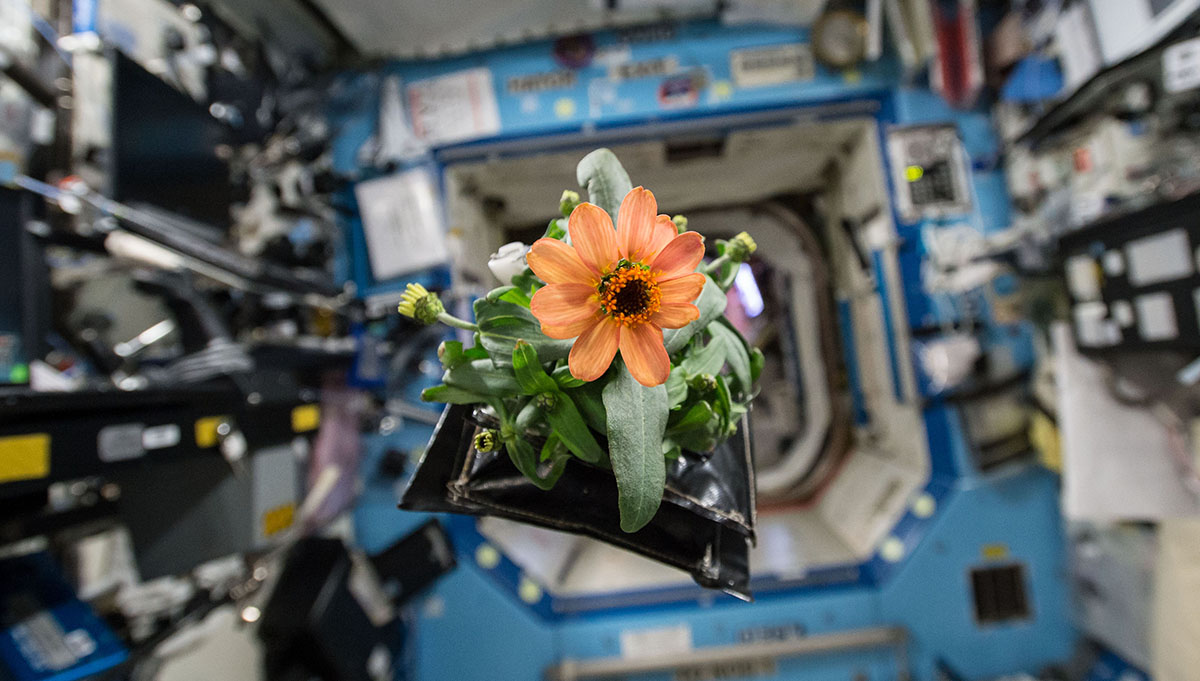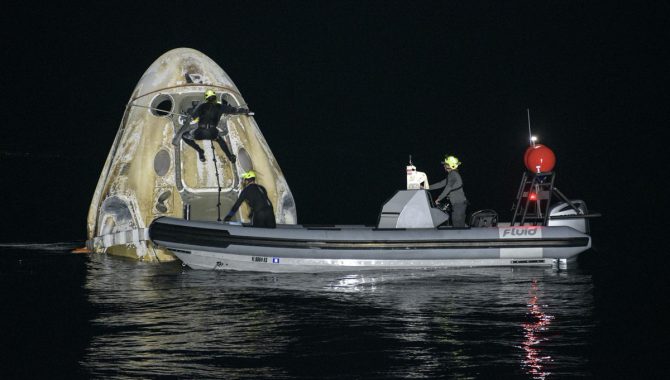
Support teams work around the SpaceX Crew Dragon Resilience spacecraft shortly after it landed with NASA astronauts Mike Hopkins, Shannon Walker, and Victor Glover, and Japan Aerospace Exploration Agency (JAXA) astronaut Soichi Noguchi aboard in the Gulf of Mexico off the coast of Panama City, Florida, Sunday, May 2, 2021.
Credit: NASA/Bill Ingalls
Two missions, half a century apart, share a few things in common.
Until just before 3 a.m. on May 2, 2021, when a SpaceX Crew Dragon capsule named Resilience descended through the night sky beneath four large parachutes and splashed down in the Gulf of Mexico, no NASA astronauts had made a water landing in the dark since Apollo 8, which splashed down in the Pacific Ocean near Hawaii before dawn on December 27, 1968. Two disparate, impressive missions, separated by an eventful half century of space exploration.
NASA SpaceX Crew-1 blasted off from Kennedy Space Center’s Launch Complex 39A on November 16, 2020, the first post-certification mission in NASA’s Commercial Crew program, following two demonstration flights. Counting Demo 2, it was the second crewed spaceflight of a Crew Dragon. Commander Michael S. Hopkins, Pilot Victor J. Glover, and Mission Specialists Shannon Walker and Soichi Noguchi (an astronaut with the Japan Aerospace Exploration Agency) flew aboard Resilience to the International Space Station (ISS).
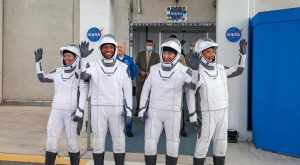
From left are NASA astronaut Shannon Walker, mission specialist; Victor Glover, pilot; NASA astronaut Michael Hopkins, spacecraft commander and JAXA astronaut Soichi Noguchi, mission specialist.
Credit: NASA
“The launch itself was significant because this was the first time that we had a full crew aboard the commercial vehicle and taking us up to seven people aboard the International Space Station—that was a huge moment. And then of course, I’ve got to say, splashing down and having a successful end to the mission was a huge moment as well,” Hopkins said in a press conference on May 6.
Apollo 8 also blasted off from Launch Complex 39A—51 years, 10 months, and 27 days before Crew-1’s launch. It was the second crewed spaceflight in the Apollo Program and the first bound for the Moon. Commander Frank Borman, Command Module Pilot James A. Lovell, Jr., and Lunar Module Pilot William A. Anders spent 20 hours in orbit around the Moon, broadcasting live on Christmas Eve.
“Looking back at the Earth on Christmas Eve had a great effect … for me,” Borman recalled. “Because of the wonderment of it and the fact that the Earth looked so lonely in the universe. It’s the only thing with color.”
The astronauts of Crew-1 spent 167 days in space, living and working aboard the ISS as part of Expedition 64 and Expedition 65 on the space station. The spaceflight established a new record for the longest crew mission launched from U.S. soil, nearly doubling Skylab 4’s previous record of 84 days. Like the crew of Apollo 8, the astronauts of Crew-1 formed a close group who worked well together to solve problems.
During the press conference, Hopkins recalled a docking simulation in which, “as most sims have, there are things that don’t go quite right.” He said that as the team talked through the problem, “every single one of us had something to contribute to coming up with what the solution was. … In hindsight now I think that was a good precursor for what the mission was going to be like, because the mission went that way as well. More or less, I think everything went like clockwork.”
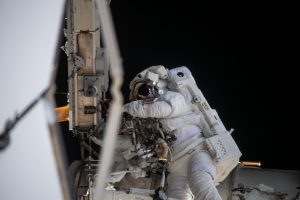
Crew-1 astronaut Soichi Noguchi (Japan Aerospace Exploration Agency) installs solar array modification kits to ready the International Space Station for newer, more powerful solar arrays being delivered later this year.
Credit: NASA
The astronauts had a full agenda during their stay at the ISS, participating in five spacewalks in which they connected cables on a recently installed science platform, prepared the site for upcoming solar array upgrades, serviced the station’s cooling system, and completed other maintenance tasks.
One of the highlights of the mission for Hopkins came on April 5, 2021, when the Crew-1 astronauts, who had docked on the Harmony forward port, moved their spacecraft to the Harmony zenith port. This move opened the Harmony forward port for the NASA SpaceX Crew-2 mission, which arrived at ISS on April 24, 2021, and will better accommodate delivery of new solar arrays later this year.
“It was just amazing that the first time that we’ve done this, … it went according to the schedule. You usually see some changes to the schedule—a little late here, a little early there—but I mean it just marched right down like it was written out,” Hopkins said.
“One of the reasons I say I think that is such an important part is because there is going to be a lot of vehicle traffic coming up to the international space station over the next four or five years, particularly with these commercial capabilities coming up. And there’s going to be a need to move vehicles around. So having this capability I think is going to be extremely important.”
Inside the ISS, the Crew-1 astronauts participated in experiments focused on the role of microgravity on human health and in disease, using tissue chips that represent human organs. They also participated in gardening experiments, growing and harvesting vegetables, including mustard leaves that the crew used to make a dinner of fresh wraps.
“Absolutely fantastic to have that fresh food,” Hopkins said. “It wasn’t just that either. You would float into that module where the crops were growing, and you could just smell it. And it smelled like the fresh produce section of your grocery store. There’s something special about that connection to Earth that I think is pretty powerful. And the great thing is, I think we’re getting closer to where we can hopefully start to see it moving from being an experiment to something that’s just kind of standard operations … having fresh food up there.”
And a giant leap beyond the thermo-stabilized turkey with gravy and cranberry sauce that Borman, Lovell, and Anders ate with a spoon on Christmas Eve, 1968.






